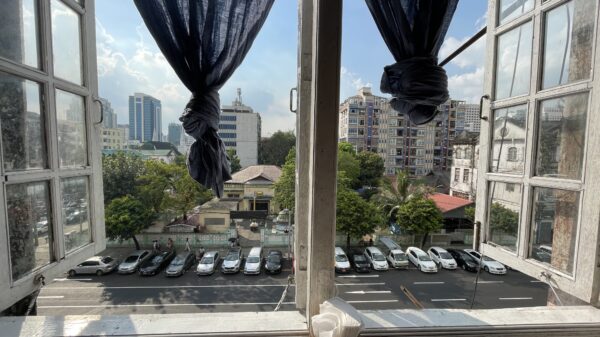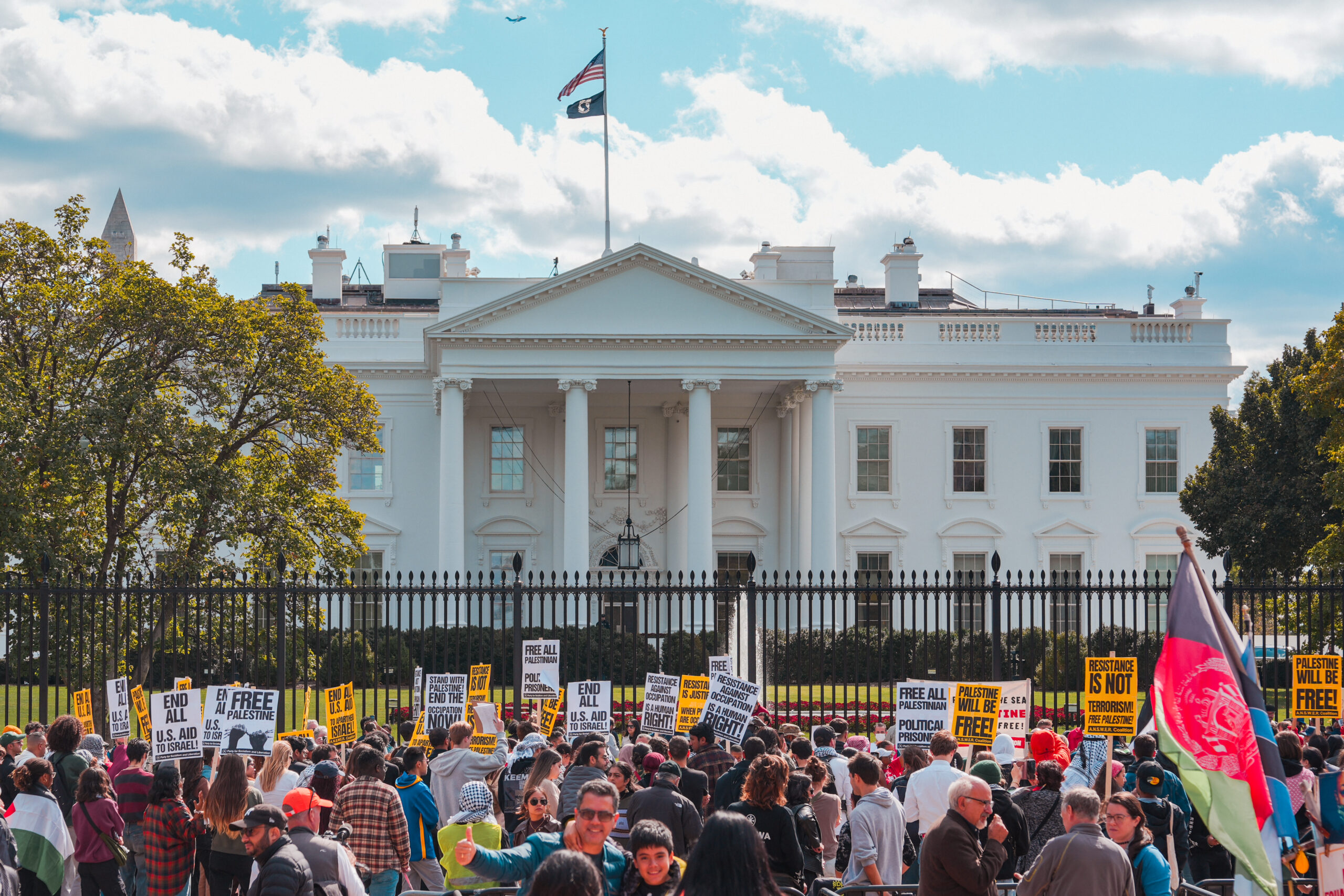Roar writer Scarlett Yu on how a decades-old dispute over the South China Sea could be growing into a global crisis involving two superpowers
Tensions have risen following aggressive military and maritime activity by several states that each have claims over the disputed South China Sea. Specifically, the conflict between the Philippines and China has caught international attention due to an alarming image in the region of Spratly Islands. Traces of a Chinese vessel were caught in March this year lingering at the Whitsun Reef, where 200 Chinese marine militia ships accumulated among the waters. This was taken as a sign of China’s domineering presence in the South China Sea.
China claims to possess full ownership and sovereignty of almost 80% of the waters, a resourceful marine realm. However, when it comes to the legality and enforcement of such territorial claims, numerous issues have arisen and intensified over time as states actively fight for the militaristic use and commercial exploitation of the waters.
The South China Sea is officially regarded as the large swathes of ocean encircled by the People’s Republic of China and Taiwan to the north and major southeast Asian countries such as Vietnam, the Philippines, Malaysia, and Indonesia to the south. The sea is abundant in islands, reefs, and banks, making it geopolitically significant in setting up main shipping lanes as well as strategic maritime bases. Notably, Vietnam and the Philippines were among the first few claimants to get involved in island building activities.
China was the next superpower to enter this potentially lucrative business; records showed expansive island building efforts starting in 2014. Within three years, China has constructed more artificial island surfaces than all other nations combined, reflecting its nationalist ambitions and desire to further bolster the growth of its economy. Such expansion in the development of the South China Sea could be seen by some countries as an aggressive and even threatening move to stress China’s unparalleled presence in the region.
In total, South China Sea was worth $3.7 trillion in trade in 2016 and occupied around 40 percent of the globe’s energy supply chains. It not only serves as an interconnected space for one of the world’s largest shipping lanes, but contains a valuable bed of fishing stocks accounting for 10 percent of the world’s fishery business.
Eminently, what pulled the coastal states into an aggressive rivalry for dominance in the sea is the presence of rich natural resources hidden across the extensive seabed. According to the US Energy Information Administration, the South China Sea contains 11 billion barrels worth of oil and 190 trillion cubic feet of natural gas, with other estimates putting those figures even higher. Thus, the discovery of energy sources provoked a wave of hostile interaction among the coastal states.
From a historical perspective, the dispute over the South China Sea has taken place since the mid-20th century. When China swiftly established its presence on a few features of the Spratly Islands in 1946, the French and Vietnamese, having failed to seize control of Woody Island (also owned by the Chinese) turned their territorial intentions to the nearby Pattle Island in 1947.
Further conflict arose from these contested waters in the 1970s when oil and natural gas were revealed lying in the South China seabed. The Philippines made the first move, followed by China, who was more equipped and thus came up with a clever, coordinated seaborne plan. China’s maritime traces are unleashed in silence but when they strike, the process is done in deadly swiftness, which explains why China could continuously expand its maritime influence among competing countries. China’s island building activities demonstrate this efficiency. It was confirmed that within a brief period of three years “China has reportedly constructed more new island surfaces than all other nations have constructed throughout history.â€
The result of these historic maritime collisions was a clash between opposing coastal states that only got worse as the years went on leading to today’s South China Sea dispute. To better understand why the maritime dispute has remained unsolved for decades, let’s take a look at some of the renowned conflicts and controversies that have sprouted under the force of international law.
Firstly, under the Law of the Sea Convention (UNCLOS), all countries are given the jurisdiction of exploiting maritime resources within a 200 nautical mile “exclusive economic zone†(EEZ) of their land border. And when these zones meet or overlap with one another, associated countries are responsible for the act of peaceful negotiation and cooperation that leads to social and economic stability.
In fact, in 2002, China and the Association of South East Asian Nations (ASEAN) gathered in a formal consensus to sign the Declaration on the Conduct of Parties in the South China Sea. The declaration was effectively a code of conduct for negotiations in the South China Sea. It highlighted the parties’ obligation to “exercise self-restraint in the conduct of activities that would complicate or escalate disputes and affect peace and stabilityâ€.
One of the main conflicts to the use of EEZs in the South China Sea revolves around China’s alleged sovereignty of the sea based on the “nine-dash lineâ€, which encompasses a maritime region 2000 miles away from mainland China. This claim would comprise over 80 percent of the entire sea and inhabits almost all of the offshore features and waters. Tensions escalated for the unequal segmentation of the sea and the claiming rights of underlying resources. As a result, the Philippines filed an arbitration case to the UNCLOS in 2013, hoping for a ruling against China’s radical territorial claims. In 2016, the Permanent Court of Arbitration at The Hague issued the ruling in favour of the Philippines on every assertion it holds. However, China dismissed the results of the tribunal and refused to recognise the court’s decision.
Under the UNCLOS, there are certain restricted rights for maritime authorities, and one of them asserts that only land territories that are suitable for human habitation are allowed to generate EEZs. In the 2016 tribunal, the court found no evidence that the Spratly Islands can sustain human residence. This contradicted the validity of the “nine-dash lineâ€, where China allegedly drew its territorial lines to the very south end of the South China Sea.
Another major conflict lies in the growing tension between United States and China in regards to military activities across territorial waters within the “innocent passageâ€. Under UNCLOS, foreign warships could sail within 12 nautical miles of states with the condition that they don’t conduct military operations and are set on direct water routes. The US has constantly implemented what is commonly called Freedom of Navigation Operations (FNOPs) in the South China Sea as a direct move to challenge what Washington calls “attempts by coastal states to unlawfully restrict access to the seas.â€
While the US maintains that the purpose of these activities is asserting freedom of navigation in order to act as the main protector of political, commercial, and security interests, China believes that no military activity should be operated in the EEZs under international law. As shown from recent increased military drills carried out by the US Navy in Chinese EEZs, the tensions between the two world superpowers is growing alarmingly fast. America’s strong interest in facilitating trade routes and international waterways through the conduct of the freedom of navigation, has clashed with China, who believe that keeping an strong grip over the South China Sea is the key to becoming a global superpower.
The current state of the South China Sea Dispute is filled with a lingering anxiety and vigilance. In addition to the United States, Australia and the Philippines are also expressing opposition to the way China arbitrarily claimed certain regions. Australia hasn’t clearly made an aggressive stance on criticising the legality of China’s territorial sovereignty due to fears of provoking a militaristic response. Yet, it did show determination in repelling what they called “militarisation of the seaâ€. More concerns of possible conflict are unfolding within the stirred waters of the South China Sea. Maritime disputes over precious resources and land reclamations are further manifested by clashes between coastal states and, more recently, the world’s two largest superpowers.

















